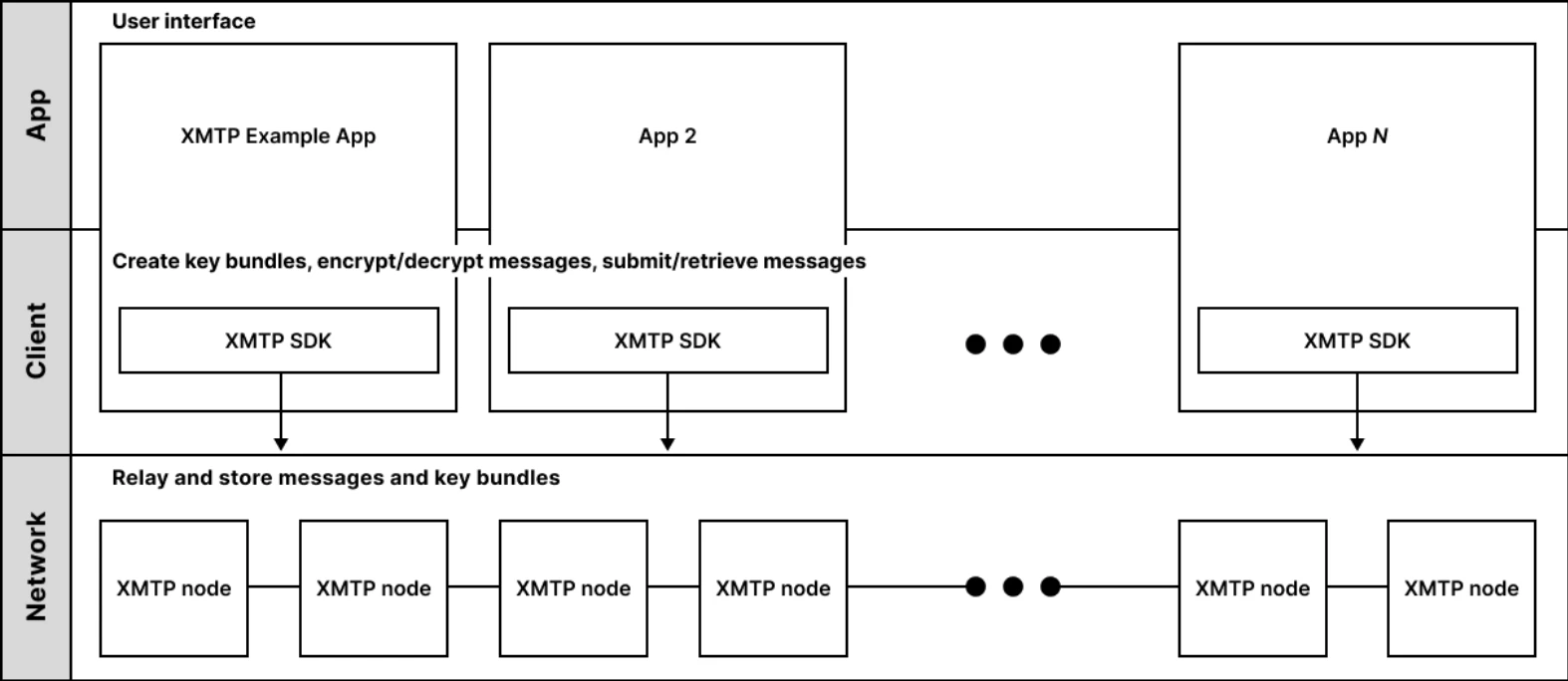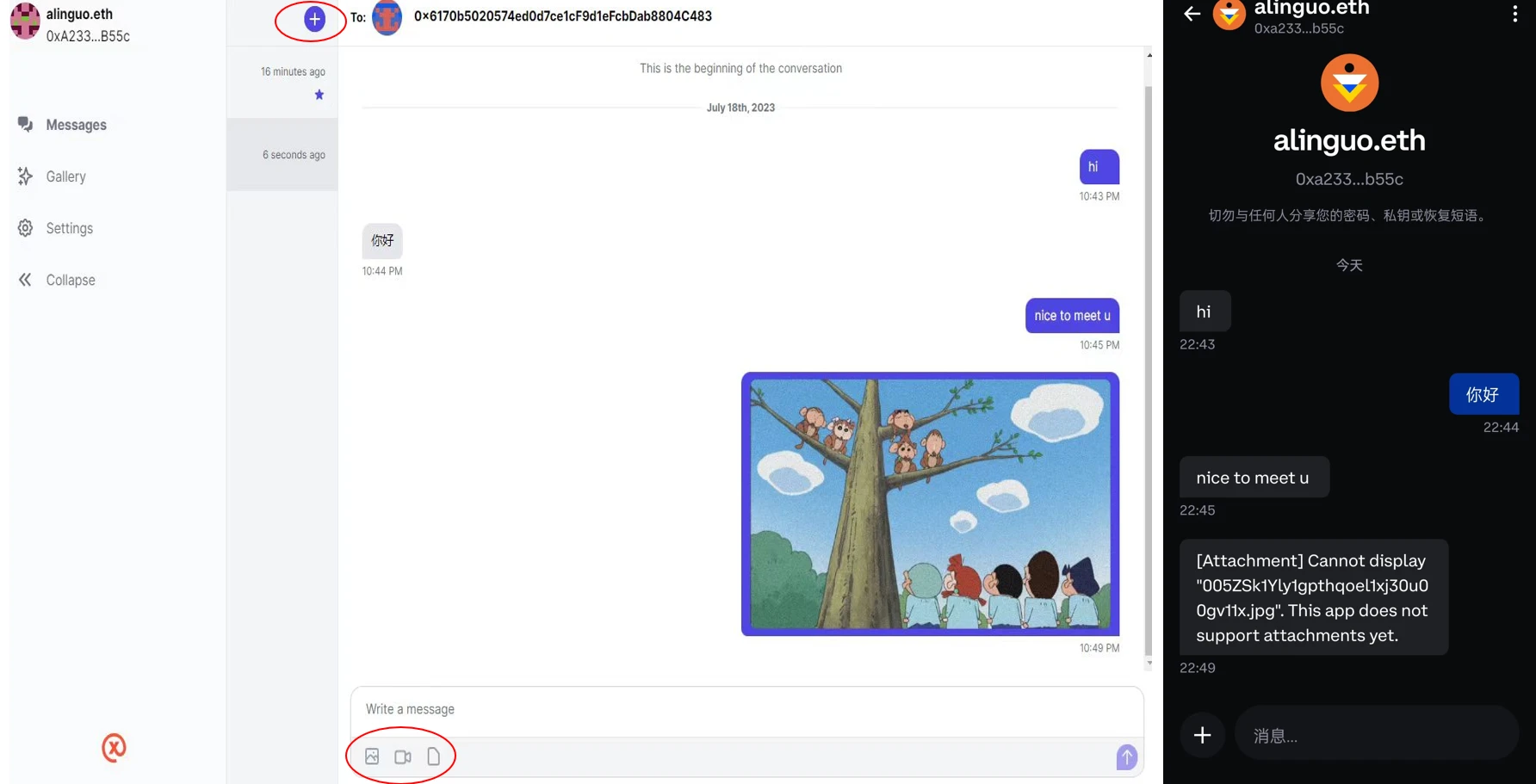What new things has XMTP brought to Web3 social with its partnership with Coinbase and Lens?
XMTP's partnership with Coinbase and Lens has brought new features to Web3 social.Author: Fu Ruhao
Recently, Coinbase Wallet announced its integration with the open-source communication network XMTP, enabling instant messaging between wallet addresses.
XMTP not only collaborates with Coinbase Wallet, but also helps Lens Protocol, a decentralized social media protocol that was just released this week, to enable instant messaging. In addition, applications within the XMTP network ecosystem can communicate with each other.
In the current Web3 social competition, many social projects claim to be decentralized and compete with Twitter, but most of them fail to deliver. However, XMTP seems to be taking a unique path: exploring the encryption native scenes with real demand, such as NFT markets, wallets, and DeFi.
- Quick Look at Velodrome V2 Further Enhancing Asset Efficiency, Strengthening OP Super Chain Vision
- LianGuai Observation | Opepen’s Rekindling A Community’s Co-creation and Win-win
- LianGuai Daily | RISC Zero raises $40 million; Manta Network developer p0x labs raises $25 million.
So, how is the project developing technologically? What partnerships have been established? And how will instant messaging change the design of Web3 projects? Odaily Star Daily has experienced this product and will share an overview of the project, evaluation insights, and some speculations below.
Overview of XMTP Project
XMTP is positioned as a fundamental communication infrastructure for transmitting Web3 messages in a more secure and private manner. It includes identity verification, end-to-end encryption, interoperable inboxes, and message relay functions.
The XMTP structure consists of three layers: the network layer, client layer, and application layer.

1. Network Layer
The XMTP network layer is built by peer-to-peer node operators. Nodes provide message APIs that allow client applications to exchange messages through the XMTP network.
The nodes store envelopes (packaging style of messages, including senders and receivers) in topics (carriers that involve nodes transmitting the messages), forwarding them to other nodes, so that the envelopes can be retrieved by client applications. In simple terms, the operation of nodes is similar to other projects, mainly responsible for message synchronization, packaging, and delivery.
Currently, the XMTP network layer is operated by the project itself, but it will be decentralized through open node registration and incentive policies in the future.
2. Client Layer
The client layer consists of clients built using the XMTP SDK. Clients are responsible for creating XMTP identities, encrypting and decrypting data, and communicating with the XMTP network. In simple terms, the XMTP SDK is built and used by the respective project parties and has little to do with users.
3. Application Layer
The application layer consists of projects within the XMTP ecosystem. XMTP follows a B2B route and does not directly acquire users from the consumer end. Instead, it establishes partnerships with other Web3 protocols or products to achieve message exchange between blockchain accounts at the application layer, enrich its own ecosystem, and create network effects. Currently, participants in the XMTP ecosystem include CyberConnect, Lens, Coinbase, Converse, ENS, unstopLianGuaibledomains, and more.
From a technical perspective, XMTP aims to build a basic communication infrastructure network that allows projects connected to this network to break down communication barriers. For example, in Web2, WeChat and Alipay cannot communicate with each other because they each have their own social communication networks and cannot deliver messages across barriers. However, in the XMTP ecosystem, users can connect with each other through wallet addresses as unique identifiers in the XMTP network, enabling effective message transmission.
It is worth noting that in August 2021, XMTP completed a Series A financing round of $20 million, led by a16z, with participation from Coinbase Ventures, StarkWare, and other institutions and individuals. As a result, XMTP can collaborate with Coinbase Wallet, which is not surprising.
Instant Messaging Experience
Because XMTP is not only integrated with Coinbase Wallet but also collaborates with Lens for development. Odaily Star Daily tested this function using two products.
1. The following image shows the instant messaging between Coinbase Wallets, which is relatively smooth, and the sending and receiving of information are timely.

In the above image from left to right, Coinbase Wallet goes from the initial interface to the message sending and receiving interface, then to the contact search interface, and finally to the chat content interface. Since XMTP is also integrated with ENS, the experience of finding specific users is relatively good.
However, the test subjects in the above image were randomly selected, and chatting can be done without the consent of the other party, which raises concerns about privacy (how is it different from spam messages), but it is more convenient and accurate for the implementer.
2. The following image shows the interoperable communication between Coinbase Wallet and Lens, both of which are in the XMTP communication ecosystem, enabling instant messaging.

The left image is the Lens interface, and the right image is the Coinbase Wallet interface. Currently, the messaging between the two platforms is highly responsive. As can be seen from the red circle at the bottom of the left image, in addition to message exchange, images, files, and other media can also be sent. However, Coinbase Wallet does not currently support functions beyond text messaging.
What Can XMTP Bring to Web3?
In the not-so-hot niche field of SocialFi, it often faces questions about whether decentralization and token economics are pseudo-demands for social interaction. Admittedly, most users would choose functionality over decentralization. Web 3 social applications are slightly inferior in telling the story of “mass adoption,” while “small and beautiful” products are difficult to generate network effects and contribute to ecosystem development.
Faced with such challenges, XMTP provides its own solution by targeting the needs of crypto-native scenarios.
In its v2 documentation, the official XMTP envisions some scenarios:
Decentralized social networking: Like using WeChat. Discover new friends, create groups, share stickers, and send group files.
Project marketing: During the early promotion of a new project, the project team can choose to send marketing messages to the relevant NFT and token holders, which helps the project achieve a cold start.
Custom client functionality: Help customize services for specific B-side needs, such as conducting financial transactions, AI customer service, streamlining DAO operations, etc., within the chat.
DeFi: Sending secure transaction confirmations, notifications, token transfers, NFT minting, etc.
GameFi: Real-time messaging, group chat, in-game notifications, etc.
We can also imagine some specific scenarios, such as:
1. Asset risk warning: Recently, there have been frequent asset risks in cross-chain bridge. If the project party discovers it, they can notify the user group using the bridge as soon as possible, reducing some losses.
2. Bargaining function in the NFT market: When users purchase NFTs on Opensea, they may come across a desired PFP but the price is not ideal. It cannot be simply dismissed by offering a desired price. If communication with the owner can be established in a timely manner, the chance of a transaction can be greatly increased. (Currently, this function can be achieved through OTC swap, which is also integrated with XMTP.)
3. NFT owner community building: Through the collaboration of XMTP’s ecological projects, for example, NFT project parties can find owners through Lens and Coinbase Wallet, and initiate instant contact. (Discord is also an option, but it is not Web 3.)
As a fundamental communication protocol, if the richness of the XMTP ecosystem continues to improve in the future, the possibility of interoperability between projects in the ecosystem will increase, and unexpected scenarios may emerge. From this perspective, XMTP is at least easier to communicate in terms of narrative.
We will continue to update Blocking; if you have any questions or suggestions, please contact us!
Was this article helpful?
93 out of 132 found this helpful
Related articles
- Elon Musk establishes x.AI, aiming to snipe OpenAI or tell a new story of capital?
- LianGuai Observation | L2 Networks Go Live in Large Numbers, Ethereum’s Scaling Battle Begins in the Second Half of the Year
- Opepen Threadition has been online for 2 days and has received over 37,000 mintings. Why is Jack Butcher always able to create phenomenal NFTs?
- How to track smart money in cryptocurrencies? The first step to tracking crypto trends
- Injective, the pioneer of native order book chain, is a DeFi public chain based on COSMOS.
- 3-Minute Introduction to UniswapX How Powerful is the Next-Generation DEX Liquidity Aggregator?
- LianGuai Daily | Lens Protocol releases its V2 version; Binance has integrated BTC Lightning Network





